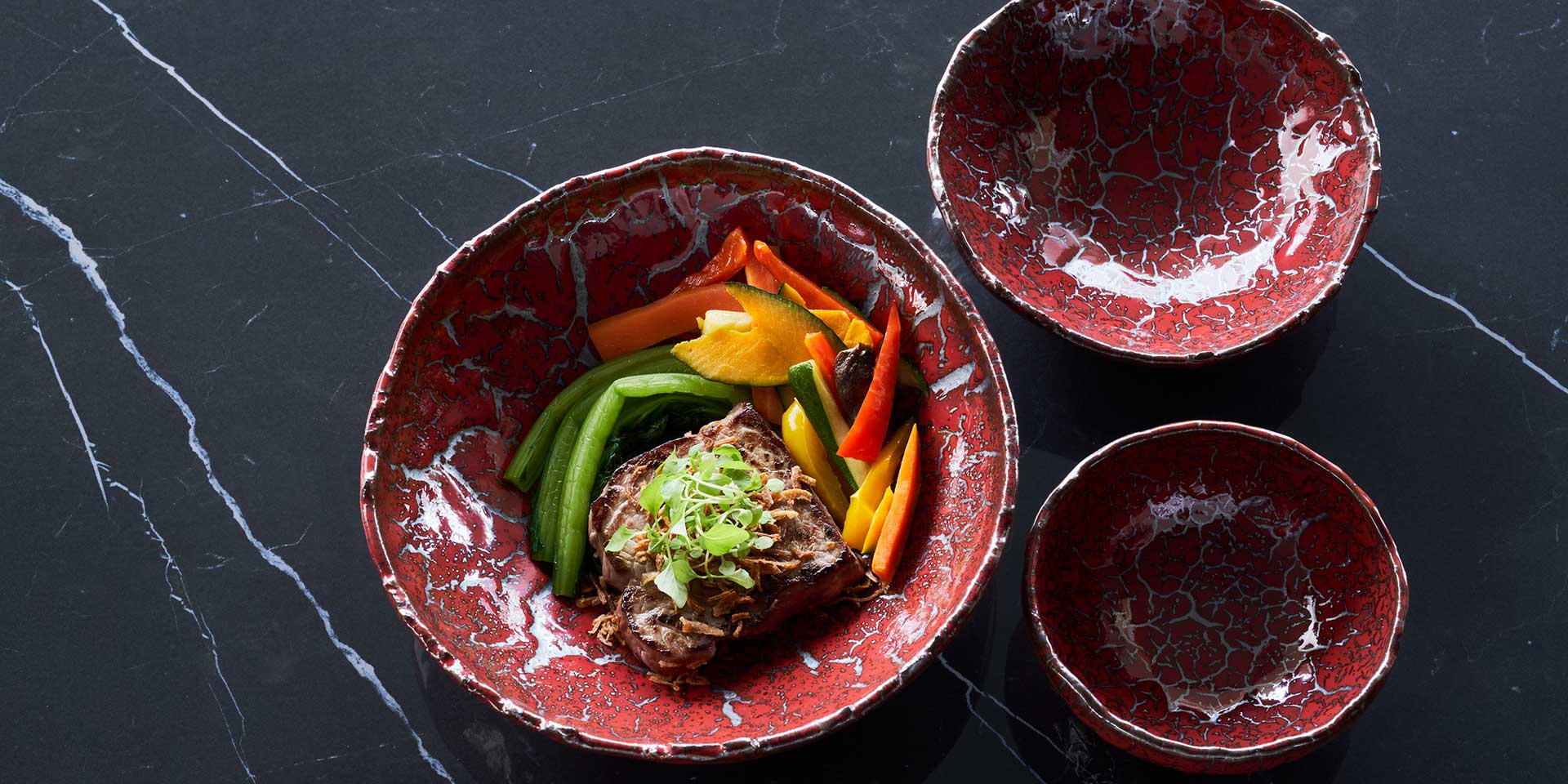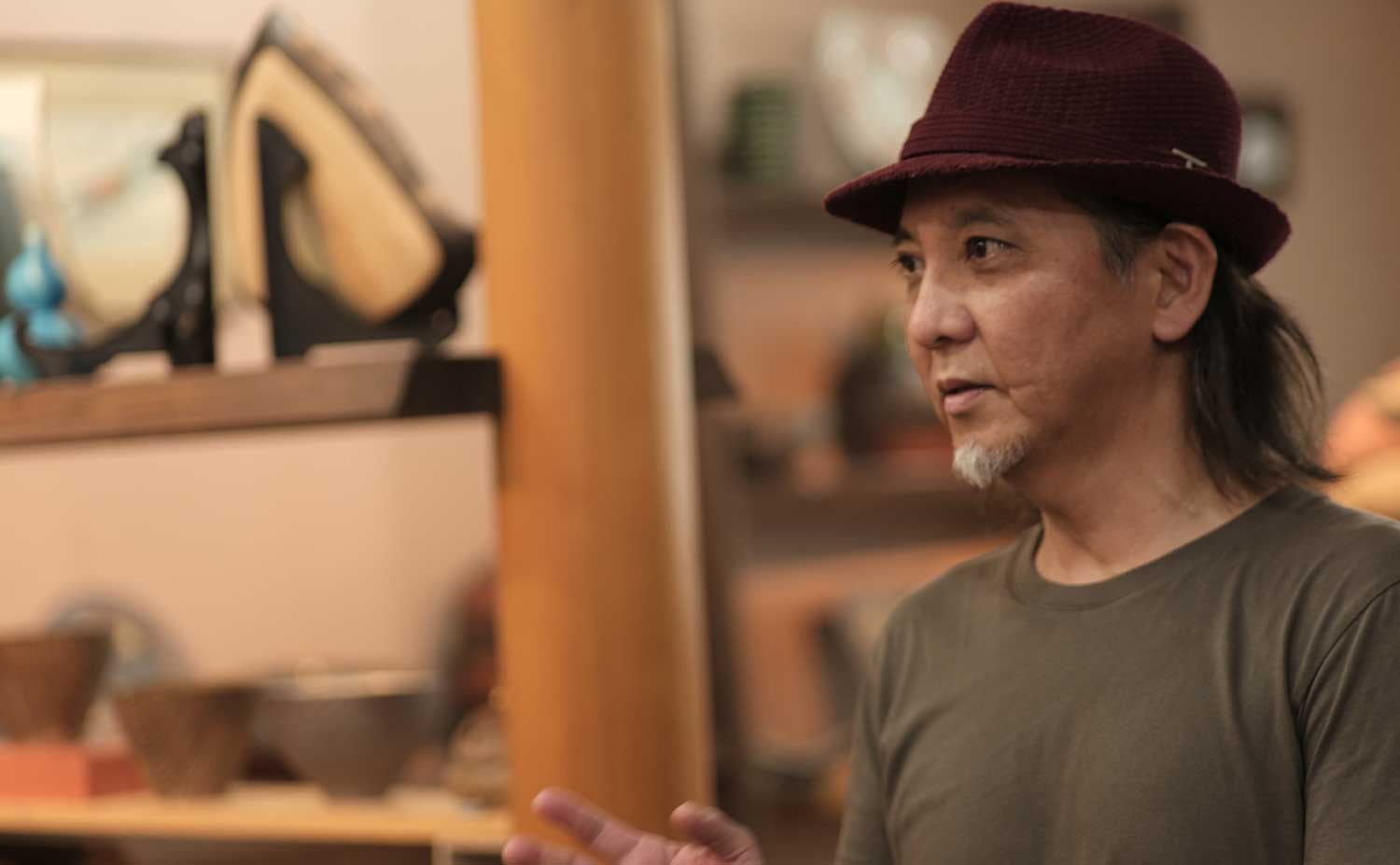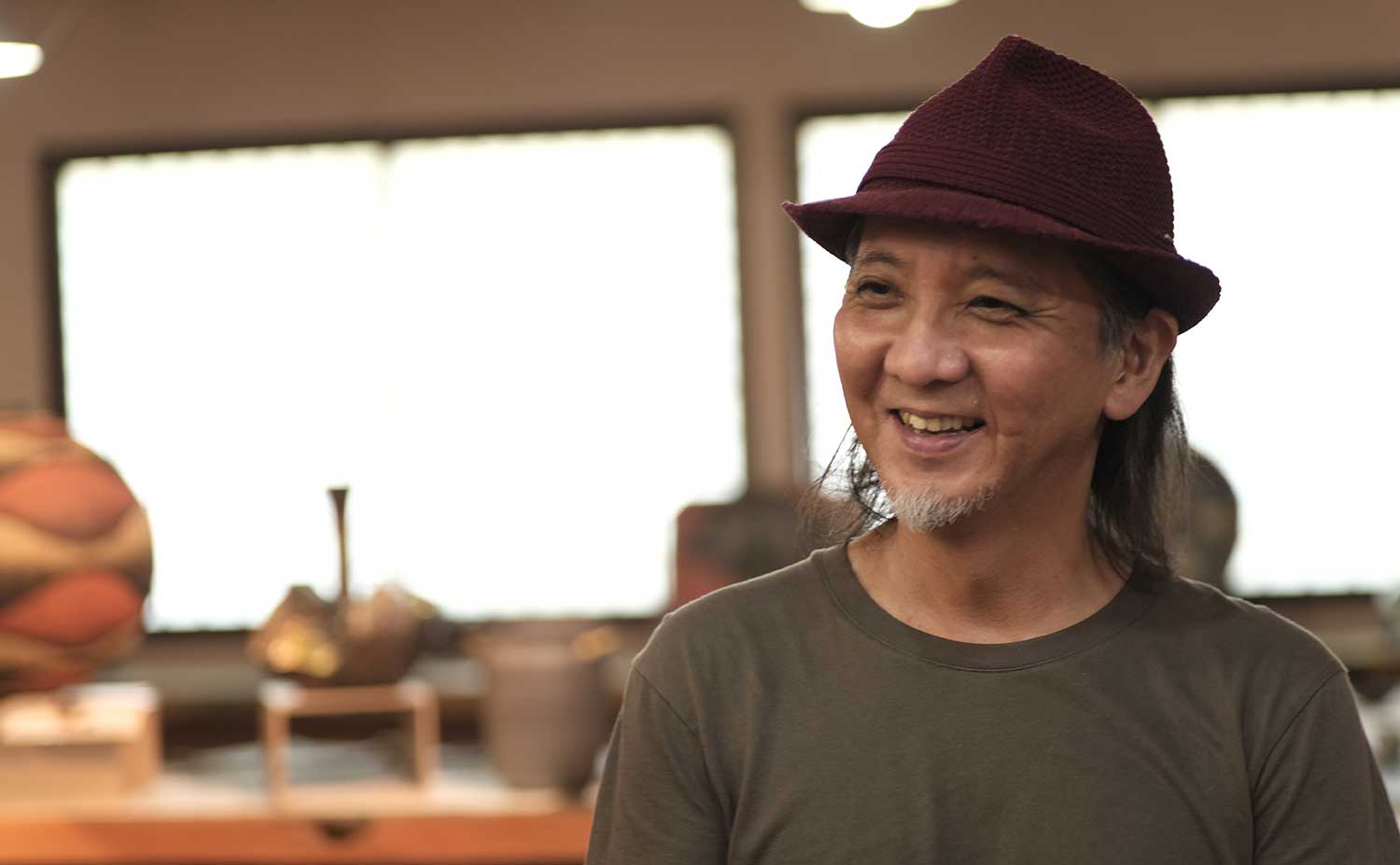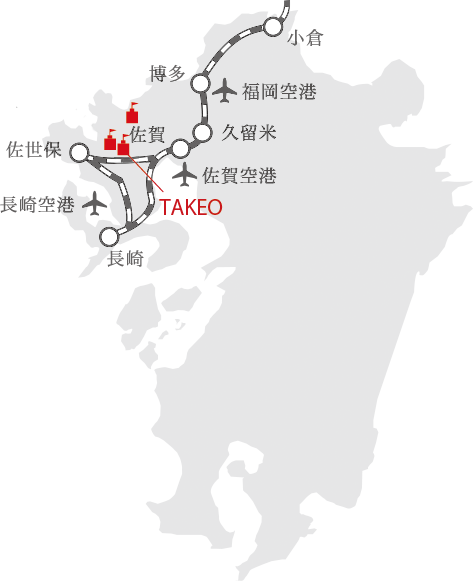HOUJUGAMA



Our kiln is located in the mountains overlooking a pond and the beautiful Mt. Kurokami which has outstanding huge sheer rocks.
I used to play in the pond when I was a child. Against this beautiful backdrop and rich nature, I am working earnestly with the clay to make pottery.
I actually wanted to work as a graphic designer, but the workshop caught fire, and I unexpectedly entered the field of ceramics. My father’s generation was making art works, but I wanted to try my hand at tableware, so I set up a tableware department in the Hojyungama and taught myself to make pottery tableware.
Takeo ware is not like Karatsu, Arita, or Imari ware. There are no rules, so it can be said that its characteristic is freeness. Each kiln has its own uniqueness and diversity.
I always value originality in my work and aim to create one-of-a-kind products.
Since I’ve been in this field for 40 years, I always have an afterimage of things I’ve made or seen before, but I have a strong belief not to make something if it looks like something I’ve seen somewhere else.

Recently, I have been paying attention to the natural patterns created by nature, and I am fascinated by designs that cannot be created intentionally by humans.
I often use methods that are not used in ordinary ceramics. For example, in the papyrus collection, I use wrinkled aluminum foil to make molds instead of paper. In the Ryuboku (driftwood) collection, I pick up driftwood from the sea and recreate the grain of the wood with plaster to make molds.
The Magma collection is created with the image of magma blowing out from a volcano, flowing, and cooling as it solidifies. I hope you can feel the breath of the earth.
I make a ball of clay, burn the surface with a torch, and squash it all at once to create the shape. I was inspired when I saw drying soil cracking.
| Bunga YAMAMOTO | |
|---|---|
| 1963 | Born in Imari City, Saga Prefecture |
| 1980 | Selected for the Saga Prefectural Exhibition |
| 1981 | Graduated from Arita Technical High School, Design Department |
| 1990 | Awarded New York Japan Grand Prize |
| 1990 | Exhibited at New York T&N GALLERY |
| 1990 | Invited to exhibit at New York GALLERY Molina |
| 1991 | Awarded International Art Grand Prize at the International Art New York Exhibition |
| 1991 | Awarded ART SPEAK Prize |
| 1993 | Began to have solo exhibitions several times a year at various places every year |
| 2000 | Selected at the Kyushu Yamaguchi Ceramics Exhibition |
| Since then, exhibited several times a year at various events and solo exhibitions. |

| Company Name | HOUJUNGAMA |
|---|---|
| President | Bunga YAMAMOTO |
| Address | 1947 Miyano, Yamauchi-cho, Takeo city, Saga, 849-2305, JAPAN |
| Tel | +81-954-45-3290 |
| FAX | +81-954-45-4840 |
| Official website | https://houju-gama.wixsite.com/website |